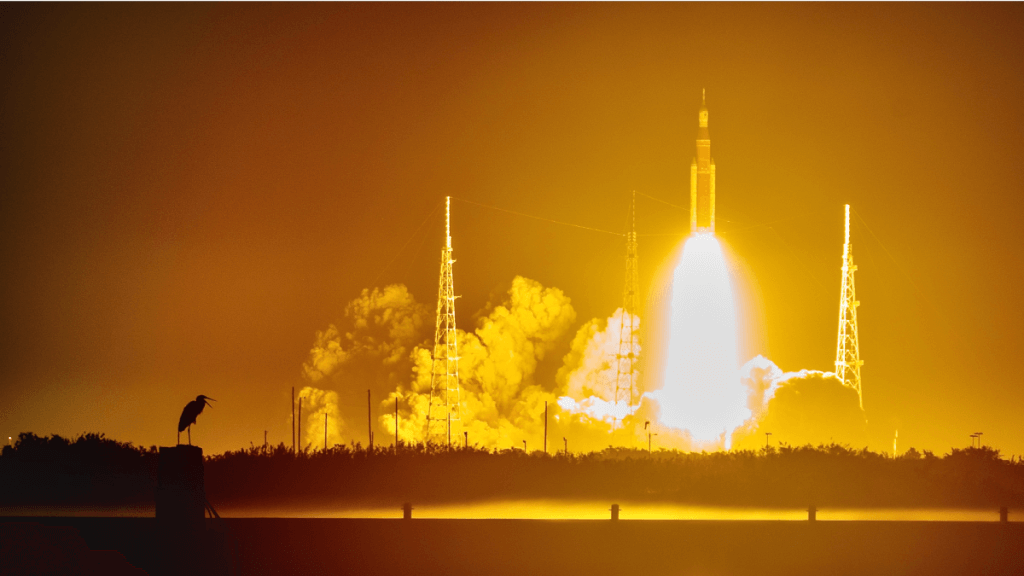NASA engineers just finished their first practice countdown ahead of a planned 2024 astronaut launch to the moon.
The Artemis 2 launching team finished their first dress rehearsal on July 20, which also happens to be the day that the Apollo 11 mission touched down on the moon in 1969.
This crucial “sim” is one of many that NASA will do to get a quartet of astronauts safely off the ground no earlier than November 2024. The Artemis 2 mission’s main goal is to send NASA astronauts Reid Wiseman, Victor Glover and Christina Koch, along with Canadian Space Agency astronaut Jeremy Hansen, safely around the moon and back.
“Each simulation is a little science fiction story, but it’s a story that helps the launch team, NASA and the country to be more successful in our real endeavors,” John Apfelbaum, exploration ground systems simulation training lead at NASA’s Kennedy Space Center in Florida, said in a statement. “Yes, we get to be a little devious, and we try to put the launch team in situations they may not have thought of.”
Related: Four for the moon! NASA names Artemis 2 astronaut crew for 1st lunar mission since Apollo
Artemis 2 will launch from Kennedy atop NASA’s Space Launch System (SLS) rocket, which has only sent one other mission to the moon. The liftoff of the uncrewed Artemis 1 flight on Nov. 16, 2022 went flawlessly, but it took several countdowns to get to that point. That difficulty illustrates how crucial launch sims are to sending humans to space safely.
Sims are a commonplace tool at NASA for all missions, for launching, splashdown, spacewalks and other common astronaut activities. Such work allows for team-building, skill-building and working through the unexpected.
In the case of the SLS, the launch countdown takes two days — a veritable marathon that’s tough to simulate repeatedly. That’s why launch simulations are often broken into parts.
The July 20 simulation, for example, focused especially on the propellant loading of liquid hydrogen and liquid oxygen, along with the terminal countdown (the last 10 minutes before launch). Those are key moments to assure the mission’s success, NASA officials said.
“Simulations are really key to the launch team preparations,” Charlie Blackwell-Thompson, Artemis launch director, said in the same statement.
“Sometimes the problems the sim team puts us through are straightforward. Some are complicated. Some of them result in a continuation of the launch countdown, and some will result in a scrub decision,” she added. (Scrubs are when a launch is canceled, which happened several times with Artemis 1.)
Other kinds of simulations will be performed during launch training between now and the big day, including aborts, training alongside the astronauts and working with other centers and teams in real time.
If all goes according to plan, Artemis 2 will be followed by a crewed lunar landing on Artemis 3 in 2025 or 2026, depending on the readiness of the SpaceX Starship lander system. Alongside NASA, partners such as Canada, the European Space Agency and the Japanese Aerospace Exploration Agency are also flying astronauts and hardware on the Artemis missions.
The NASA-led Artemis Accords includes 27 nations so far that are aiming for the moon under international peaceful exploration norms. The human missions include a suite of activities, which also encompass the planned NASA Gateway space station and many robotic landers, rovers and payloads funded by NASA’s Commercial Lunar Payload Services and other programs.

